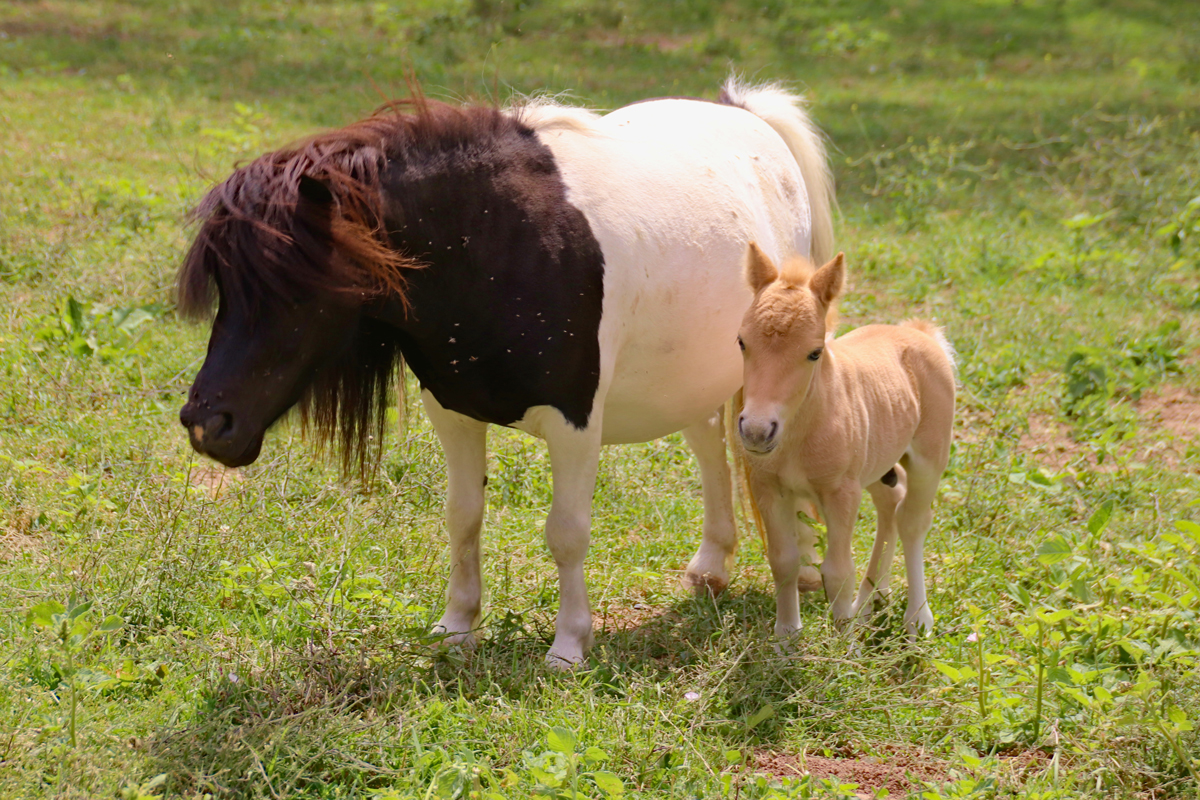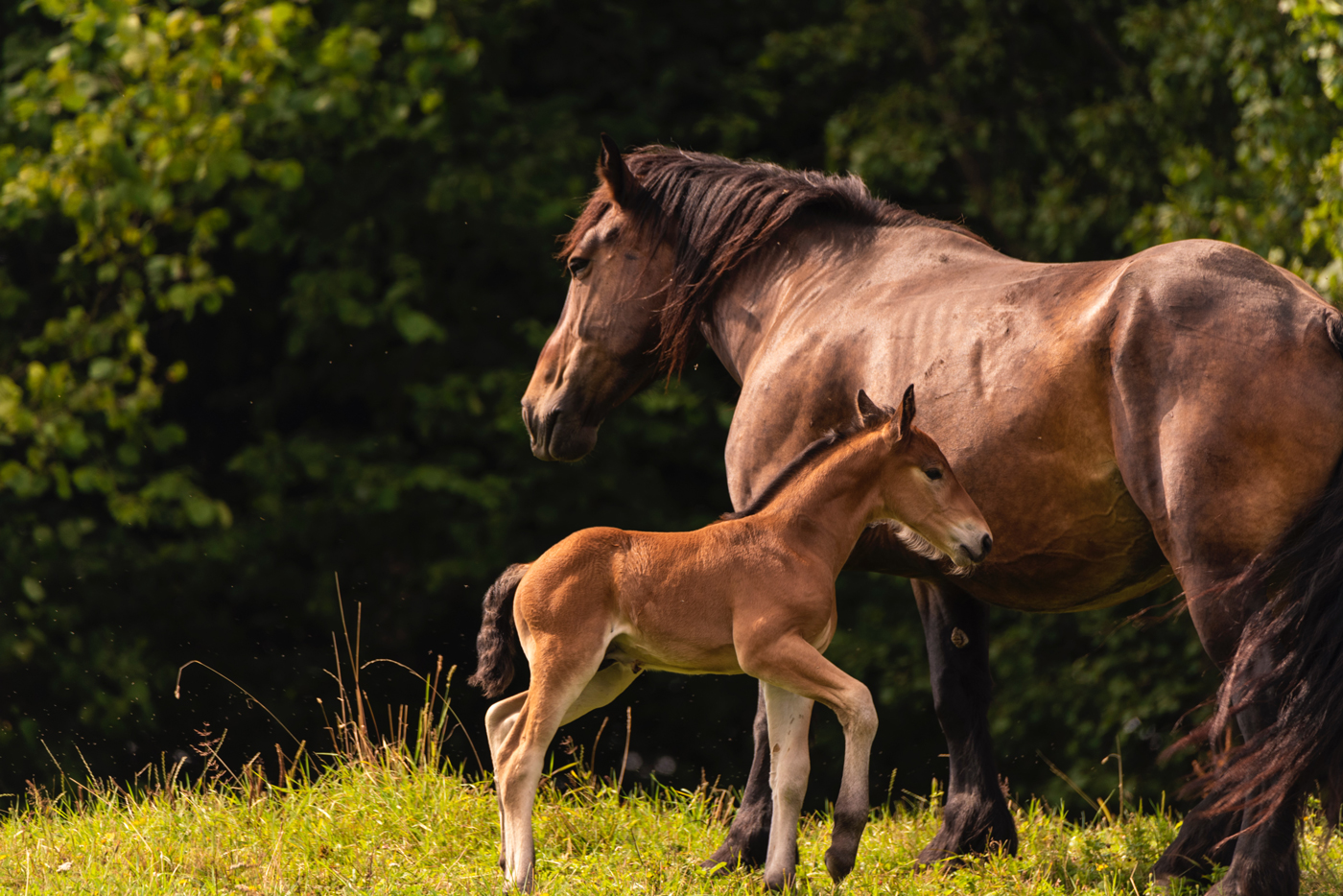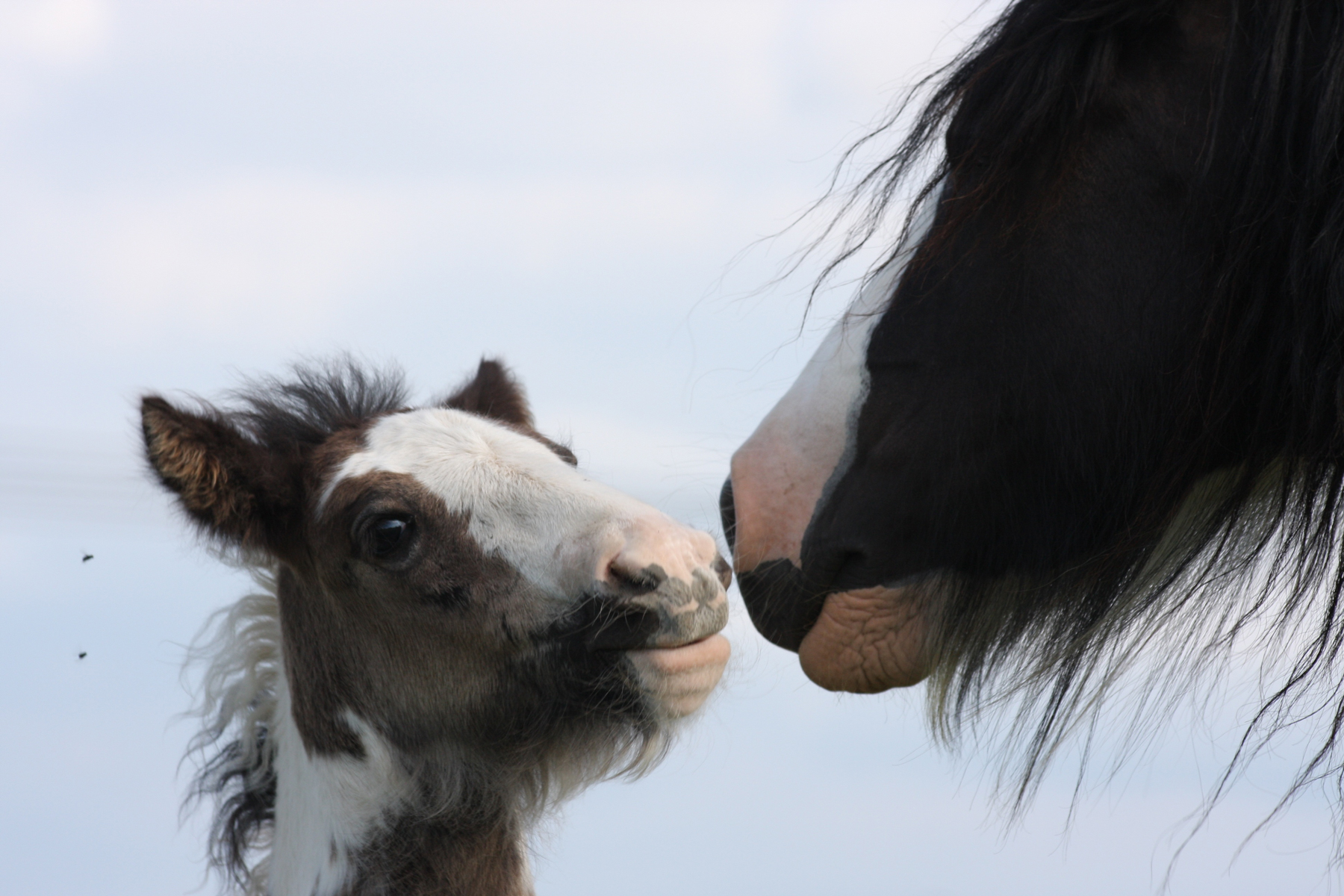For horse lovers, there’s nothing more heart-warming than the sight of a dam nuzzling her newborn foal while it takes to its wobbly legs for the very first time – within minutes of its birth.
But first, your mare has a pregnancy lasting almost a year. And as her owner or keeper, your responsibilities are huge.
So what do you need to know about taking care of a pregnant mare? How should you stable her, feed her, and exercise her? And how can equine insurance help you keep her healthy throughout that long gestation period? Read on for our guide.
Preparing your mare for pregnancy
Mares can get pregnant at any age from about 18 months until well in their 20s. However, the years between four and 15 are the healthiest for both dam and foal.
If you’d like to breed from your mare, you should first make sure she’s healthy and up to date with her vaccinations.
Overweight mares are more likely to miscarry foetuses or experience problems during foaling, so try to get your mare to a healthy weight before breeding from her.
It’s a good idea to speak to your equine vet – insurance for horses can help cover the costs of any treatment.
The stages of pregnancy in mares
The average horse gestation period is around 11 months, with conception taking place in the summer and foaling the following late spring. So what can you expect at each stage?
The first 30 days is when a pregnancy is most likely to fail, so you should take extra caution during this period.
The middle stages are generally the safest and easiest. While you should always keep an eye on them, your mares are likely to eat and exercise normally during this time.
Finally, the last few months are when your mare will really start to show and feel her pregnancy. The foal is growing rapidly at this time, and your mare is likely to slow down, keep herself apart from other horses, and need extra rest and care.
During the last month, you need to prepare your mare for foaling and look out for signs that you’ll soon be hearing the patter of tiny hooves!

How to tell your mare is pregnant
Unless you’re an expert, it’s tricky to tell if your mare is pregnant.
Even late in the pregnancy, some mares remain relatively slim – especially if they’re first time mums. Others have plump abdomens even when not in foal.
Lack of a heat or oestrus cycle is an indication, but some mares appear to have a heat cycle even during pregnancy, while some non-pregnant mares don’t seem to have one at all.
Pregnant mares are likely to refuse the amorous advances of any stallions. Many owners say that pregnant mares will shake only their heads rather than their whole bodies, supposedly to protect the growing embryo. But these are not reliable tests.
Instead, you need to get an experienced equine vet to check, about 14-18 days after the date the mare was bred. Ultrasound scans can confirm the pregnancy, and blood or urine tests may be used later on too.
What if it’s twins?
Most horse births are singletons, though twins do make up 15-25% of thoroughbred pregnancies. Twin pregnancies can usually be spotted at the first vet visit.
Sadly, it’s not a case of double the joy. Twin pregnancies rarely go well in horses: either the mare will spontaneously abort one or both foals, or the twins will be born alive but weak and unhealthy, perhaps dying within a few days of birth. It can be dangerous for the mother, too, especially during foaling.
So most owners and vets agree that the best thing to do is reduce the pregnancy down to one embryo. It’s smaller than a pea at this point, so this is a quick and simple procedure called “pinching”.
It may seem cruel, but it’s the safest thing to do, and gives the remaining twin the best chance of developing normally.
If twins are not spotted until later in the pregnancy, more complicated procedures will be necessary, often sadly resulting in the abortion of both foals.
Healthcare during pregnancy
Your vet will discuss with you the standard schedule of visits and ultrasounds for an uncomplicated pregnancy.
As with all horses, your mare needs regular worming – but check the labels to make sure the wormer you are using is safe during pregnancy. It’s also a good idea to give a dose shortly before foaling to prevent transmission to the young animal.
Your mare should also have some extra vaccinations before and during pregnancy to protect her and her foal.
Equine herpesvirus 1 and 4 are common conditions that are rarely problematic for grown horses, but can cause pregnancies to fail. A course of two vaccinations given four to six weeks apart is advisable if you’re planning on breeding from your mare, plus booster shots at the 5th, 7th, and 9th month of her pregnancy.
Equine arterial virus is fortunately extremely rare in the UK, but can cause pregnancies to fail or the death of young foals. Discuss vaccination with your vet.
Rota virus is a disease that causes diarrhoea in newborn foals. Pregnant mares given doses of vaccine at the 8th, 9th and 10th month of pregnancy will pass on antibodies in their first milk (colostrum), protecting their foals from this nasty – though rarely fatal – disease.
You should also give your mare extra shots of tetanus and influenza vaccines about four to six weeks prior to foaling. Again, she will pass on the antibodies to her foal, giving it some protection until it’s ready to be vaccinated itself.
Most horse pregnancies go smoothly, but if problems do occur, don’t hesitate to call your vet – insurance for your horse will help you pay for the fees.

Diet during pregnancy
Foals do most of their growing in the final three months of pregnancy, so before that point, your mare doesn’t need a special diet. Just continue to give her healthy, sufficient nutrition and let her graze as normal.
In her final stage – from eight months onwards – you should boost her intake of essential nutrients including protein, calcium and phosphorus. You can buy mineral and vitamin supplements designed for this.
In late pregnancy, she might lose her appetite, so let her eat smaller, more frequent meals.
Once she begins to produce milk, she’ll need extra energy and protein. Make sure her forage is good quality, continue with the mineral and vitamin supplements, and add in a grain/ protein mix.
Mares’ milk supply usually starts to dwindle when her foal is around three months old. You can help with weaning by gradually decreasing the dam’s supplemental feed intake to reduce her production of milk. Foals are usually weaned at around five to six months.
Housing a pregnant mare
It’s best if you can provide a stress-free environment for your mare, away from the jostles and kicks of other horses, which could potentially harm her and her growing foal.
You also want to protect her from infectious diseases, which can spread easily among horses stabled together. Good stable hygiene is particularly important.
So ideally, you’ll house your mare separately, or with other pregnant mares. If that’s not possible, choose the stall furthest from other horses.
Exercise and riding during pregnancy
Your mare needs to stay in tip-top condition throughout her pregnancy, so exercise is a must. Keep turning her out for several hours every day, so she can continue to socialise and graze as normal.
During the first 30 days of pregnancy, it’s a good idea to avoid stressing or over-exerting your mare – particularly during the hot summer months. So stick to light exercise for the first month or two.
But after that point, most experts believe you can saddle her up and ride her as normal for the middle stages of her pregnancy. In fact, race horses often compete until their sixth or even eighth month – including in jumping events.
Once your horse is in her final months of pregnancy, she’ll be naturally slowing down. It’s time for you to ease off on her training regime, and stick to light exercise only. No more jumping for a while!
Of course, if your horse is unfit or unwell, you’ll need to adapt your exercise schedule to suit. And if you have any concerns, consult your vet – horse insurance will help cover the cost of vet fees for unexpected complications.
Preparing for foaling
While 335-342 days is the average gestation period, it’s perfectly normal for foaling to take place a week or so either side of that. So during the final weeks of your mare’s pregnancy, you should be looking out for signs that the birth is imminent.
About a fortnight before the birth, your mare’s udder should start to expand and produce yellowish fluid, which turns into the first milk or colostrum. You might notice the muscles around her tail relax, and her belly drop.
Prepare for the foaling by putting her in a large stall bedded with straw, in a clean, comfortable and quiet environment. Some owners prefer to let their horses foal outdoors.

Foaling
Horses usually give birth at night, and prefer a quiet, private environment. Your vet doesn’t need to be present if you’re confident, but you should be nearby with towels, disinfectant, disposable gloves and a mobile phone in case of any problems. Make sure you’re fully prepared by reading this detailed description of foaling.
The first stage takes one to six hours, but you might not even notice it. Your mare will be restless, possibly pawing the ground, circling, or watching her flanks – similar to colic. She might get up and lie down repeatedly.
The next stage is after the waters break, and takes around 20-30 minutes. This is when the foal appears! Two hooves and legs are seen first, followed by the nose and head. Once the shoulders are out, the rest of the foal should follow smoothly.
Finally, the placenta will appear within an hour of the birth – keep it for the vet to check.
Meanwhile, your new-born foal is racing through the stages that take human babies months! It will sit up and try to suckle within 20 minutes; stand (after several wobbly attempts) within 30 minutes to an hour; and be suckling within one to two hours.
Contact your vet for a thorough check of the dam and foal. Congratulations to your beautiful new equine family!
Problems of pregnancy and foaling
Most mares carry and birth their foals without any problems. But what problems should you watch out for? Here are a few instances where you should certainly consult your vet.
- Abdominal wall hernias can occur in late pregnancy. Look out for signs including swelling in front of the udder. An assisted or caesarean delivery will probably be needed.
- If a mare starts producing milk more than two weeks before foaling, she might be at risk of giving birth early.
- If she shows no sign of udder development or milk in very late pregnancy, or after the birth, she might require injections of oxytocin after foaling to stimulate milk production.
- During foaling, if only one hoof appears, or the nose and head come first, call your vet straight away.
- If the foal is not born within half an hour of your mare’s waters breaking, call your vet urgently.
As ever, if you have any other concerns, or if your horse seems ill or in distress, it’s always advisable to seek expert advice. With horse insurance in place, there is no need to delay getting the help you need.
Get a quote from Equesure today
At Equesure, we’re horse lovers like you – and we think there’s nothing more exciting than the prospect of a new foal! So we want to help you protect your mare throughout her pregnancy.
We are specialists in arranging horse insurance policies tailored to your mare’s needs, offering a variety of cover options. Some insurers offer cover for “loss of foal” 30 days prior to birth and 30 days after, all within the mare’s policy.
The policies we arrange through our panel of trusted providers can cover up to £10,000 towards vets’ fees, plus cover for personal accident, saddlery, tack, and public liability.
We can also arrange cover for foals aged 31 days and over on their own, helping to give the newest addition to your stable a great start in life.
There are discounts available for insuring more than one horse through us. Call us today to discuss your options.
Contact us today for a horse insurance quote.
Policy benefits, features and discounts offered may very between insurance schemes or cover selected and are subject to underwriting criteria. Information contained within this article is accurate at the time of publishing but may be subject to change.






